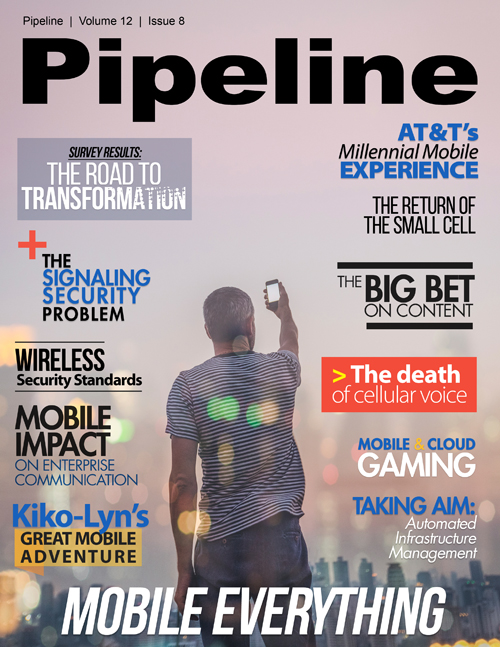AT&T's Millennial Mobile Experience
Changing the Way We Work
With time, UC&C will help revolutionize the inevitable weekly team update. More than any other generation, Millennials are on-the-go. Work will fit more conveniently into Millennials’ busy schedules. But for now, how do we make progress toward all work materials available virtually wherever, whenever, from whichever device? Here are the first steps:
- We’ll see a drop in voice calling, and an increase in IM and video calling. Nearly half of Millennials feel more comfortable communicating electronically than face-to-face or over the phone. “Talking” means more than just speech. It is increasingly visual for Millennials. And the amount of visual clues needed may change over the course of a conversation. Millennial workers embrace collaboration tools that let them switch conversation modes. What starts as a simple question via IM, may require a more detailed answer over a video call. I believe video will become the new voice.
- Mobile offices will become increasingly common. Millennial communication habits pull us toward more flexible workplaces. That’s good news for those of us who like to work from home or have colleagues cross-country. Nineteen percent of Millennials say that flexible working hours are most important, second only to training opportunities. Access to information and communications modes from any device will be a must.
- Work will shift toward assembling the best team, no matter their locations. Sixty-five percent of Millennials say that rigid hierarchies fail to get the most out of employees. Access to UC&C capabilities means HR departments can re-align to focus on assembling teams that work well together, regardless of who sits where. To respond to dynamic business demands, teams will assemble quickly and virtually from all corners of the country—or even the globe.
- Millennials will not just want, but need their IT departments to be innovative and collaborative. They have grown up in a “beta world”, and are comfortable with working around tech problems. Millennials also have little patience waiting for the next functionality. IT will need to stay on their toes to offer Millennials highly-secure, business-ready, user-friendly options.
-
Finally, collaboration will happen on a global scale. Today’s businesses have to be able to communicate across platforms and over geographical boundaries. They need to connect
with colleagues, partners, suppliers and customers from their mobile devices, which they can do using both internal and external collaboration tools.
Growth in Mobile Collaboration Will Guide Providers
Changing the way we communicate and collaborate in the workplace will require changes from everyone involved. Networks, service providers and carriers will all have to reassess. The communications modes that Millennials favor are far more data-intensive than traditional emails or landline phone calls. In order to reach this level of collaboration, carriers and infrastructure will need to step up their game:
- Networks and infrastructure providers will need to accommodate more video traffic and more real-time communication, such as IM and presence tools. Millennials have shown that they prioritize access to technology and reliable broadband, and are willing to switch providers if their service is sub-par. Connectivity and QoS will need to remain high and consistent.
- Service providers will need to build with the future in mind. New collaboration solutions rely on strong connectivity and high-capacity networks to keep traffic flowing smoothly and quickly. In the last 8 years AT&T’s network has seen a traffic increase of 100,000%, driven largely by video. As more and more work conversations shift to video, networks will have to expand. We’re planning to shift over 75% of our network to software-defined networking technologies to meet the demands of data and video users. We’re already servicing millions of wireless users this way, and we see it as the basis for 5G networks and beyond.
- Security will be imperative. Millennials experience “FOMO” (fear of missing out, for the rest of us) in their professional as well as personal lives. Sharing information back and forth is routine. IT departments and carriers will need to help ensure that this sharing is safer. We’re addressing this with AT&T NetBond®, which extends VPN and isolates traffic to and from the cloud.
- Hardware, software, and network providers must all work together. Interoperability between solutions “stacks” will become a “must have." Millennials expect apps within a given piece of hardware (such as a smartphone) to “talk” to each other and share data. They’ll expect the same from their collaboration solutions. Whether communicating between departments, offices, or other companies, using a different solutions provider should not be a barrier to the act of collaborating.
Road to the New Collaboration
With so much potential to change the way we work, solutions providers are racing to help customers embrace new technologies and collaboration tools. We’re working with established best-in-class partners to offer UC&C solutions that fit each customer’s needs, equipment investments and budget.
Above all, these tools are transforming the office from a place to a state of mind. We’re getting closer to working from wherever, whenever. Work will better fit into our lives, rather than requiring a distinct 9-to-5 block. For Millennials on-the-go, collaboration solutions will connect them to work on their schedule, with access to files, real-time communication and face-to-face video conversations with colleagues from virtually any device. With emerging technology solutions, Millennials may finally be able to have work that revolves around them.


















